Discover the Best of Himeji Castle in Just One Morning
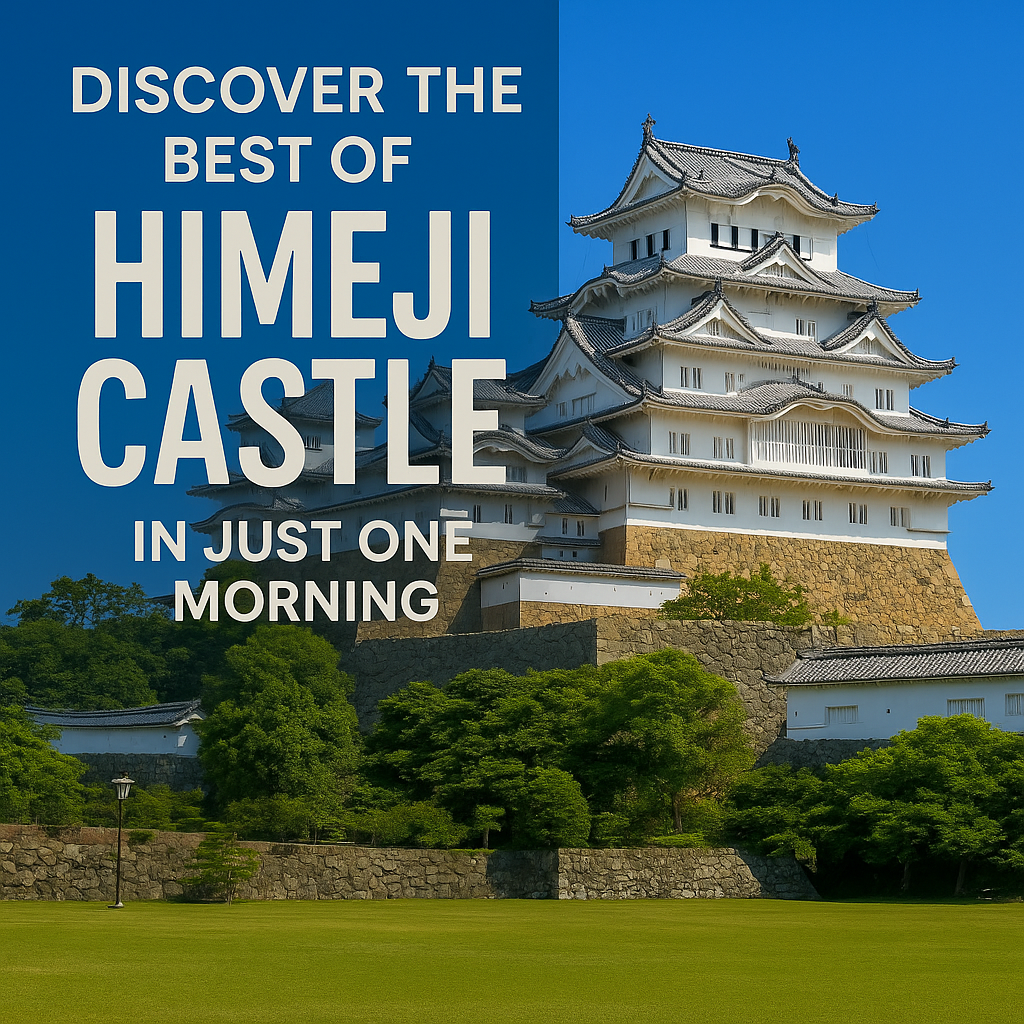
Wander through the timeless beauty of Japan’s most celebrated samurai stronghold with this expertly curated walking tour of Himeji Castle. Perfect for first-time visitors and history lovers alike, this guide highlights seven of the most iconic, visually stunning, and historically significant locations within the castle’s expansive grounds.
From labyrinthine defensive corridors and majestic wooden keeps to quiet noble residences and stunning stonework, each stop offers a vivid glimpse into the engineering brilliance and refined elegance of Japan’s feudal past—all easily experienced in the span of a single morning.
Begin your journey at the grand Hishi Gate and finish with panoramic reflections along the outer moat—a path designed for effortless flow, storytelling, and unforgettable views.
Start your adventure at Himeji Station and finish at Himeji Station for the smoothest and most efficient route.
Hishi Gate
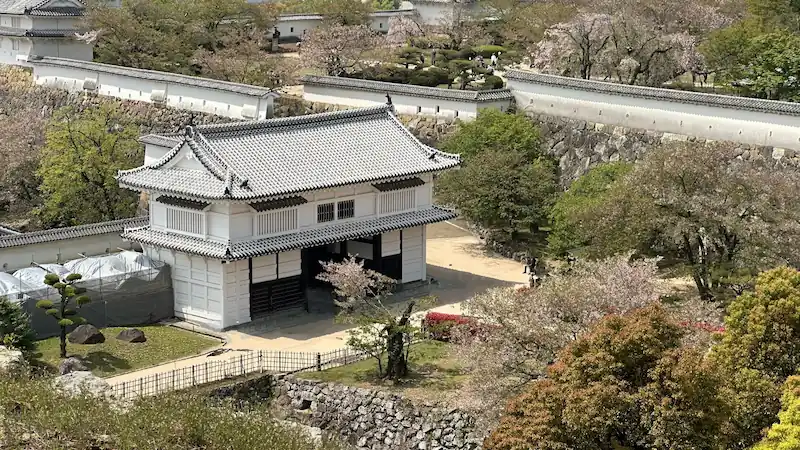
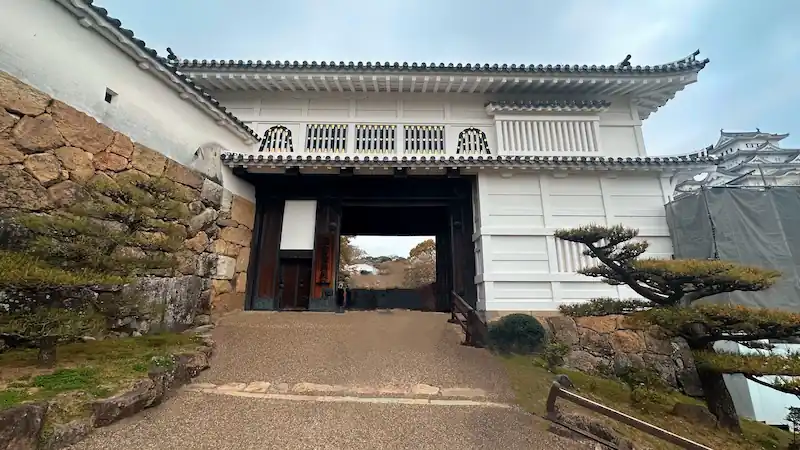

⭐ Recommended Rating
Historical Significance: ☆☆☆
Visual Appeal: ☆☆
Experiential Value: ☆☆
Standing tall as the grand entrance to Japan’s most iconic castle, the Hishi Gate of Himeji Castle is a masterpiece of military architecture and symbolic authority. Constructed between 1601 and 1609 under the command of Ikeda Terumasa—Tokugawa Ieyasu’s son-in-law—the gate embodies both the elegance and the strategic genius of the early Edo period.
Named after the diamond-shaped *hishi* crest engraved into its sturdy pillars, this two-story turret gate is the largest surviving gate in the castle complex. It was designed to both impress and intimidate. Narrow slits for archers and stone-dropping chutes (*ishi-otoshi*) above the entrance provided a deadly defense system against intruders. Yet, despite its martial function, the gate’s aesthetic qualities—such as finely latticed windows and *hi-no-maru*-style ornamental vents—exude a refined beauty typical of Himeji’s architecture.
Hishi Gate is more than a portal—it is a declaration of power, a relic of feudal sophistication, and a threshold into Japan’s most treasured World Heritage Site.
| Year Built | 1601–1609 |
|---|---|
| Builder | Ikeda Terumasa |
| Structure & Features | Turret-style gate with diamond crest carvings, stone-drop mechanisms, and decorative latticed windows |
| Restoration History | Major restorations during Showa era (1956–1964) and Heisei era (2009–2015) |
| Current Status | Original structure still standing |
| Destruction or Damage | None |
| Cultural Designation | Designated as a National Important Cultural Property |
🗺 Address:68 Honmachi, Himeji, Hyogo Prefecture, Japan
🚶 Access
15-minute walk (approx. 1.5 km) from JR Himeji Station
⏳ Suggested Visit Duration
Quick Highlights: approx. 10 minutes
In-Depth Exploration: approx. 30 minutes
📍 Highlights
- Diamond Crest Columns: The gate’s namesake feature—diamond-shaped crests carved into its beams—pays tribute to the Ikeda family emblem.
- Stone-Dropping Defense: The ishi-otoshi mechanisms above the entryway offered an innovative means to defend against attackers from above.
- Architectural Ornamentation: Graceful latticework and stylized openings add aesthetic flair to the otherwise formidable gate.
- Seasonal Beauty: In spring, cherry blossoms frame the gate in soft pink hues, while autumn brings vibrant colors—making it a photographer’s dream.
📌 Trivia
- Unexpected Historical Role: While it served a defensive function, Hishi Gate was equally a visual assertion of the castle lord’s authority and taste.
- Hidden Detail: The upper turret of the gate, typically closed to the public, occasionally opens for special exhibitions, revealing the inner fortifications.
- Famous Connections: Ikeda Terumasa, who oversaw its construction, was a key Tokugawa ally—married to Ieyasu’s daughter and entrusted with this strategic stronghold.
Wa-no-Yagura → Kesho Yagura (Dressing Tower)
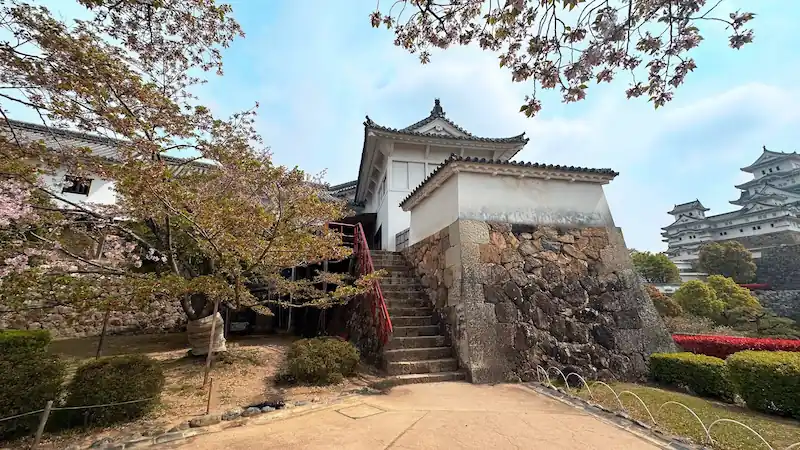
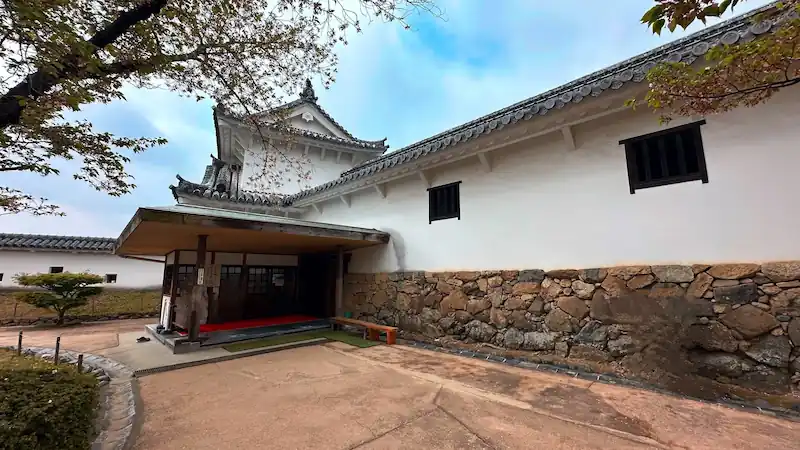
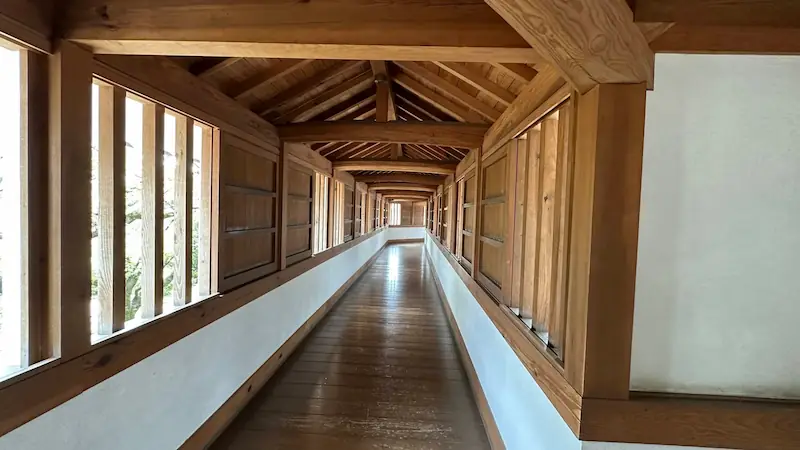
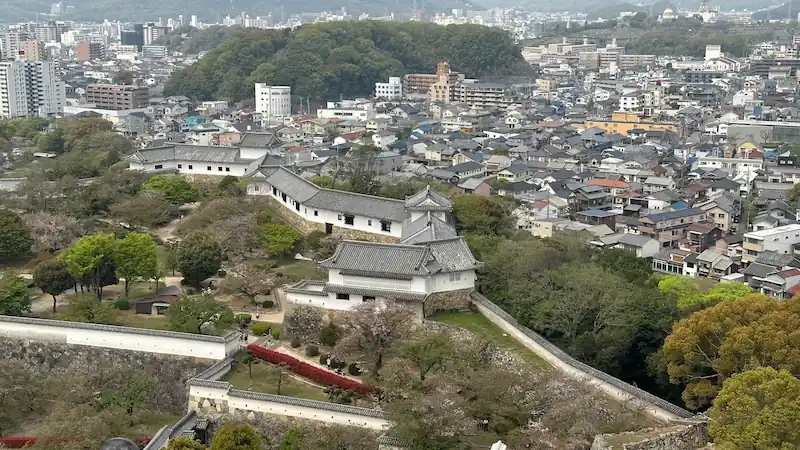
⭐ Recommended Rating
Historical Significance: ☆☆☆
Visual Appeal: ☆☆
Experiential Value: ☆☆☆
Within the serene confines of Himeji Castle’s Nishinomaru (Western Bailey) lies the Kesho Yagura, or “Dressing Tower,” a poignant relic of feudal Japan’s aristocratic life. Constructed in 1617 by Honda Tadamasa, this tower was part of a suite of additions made to accommodate his daughter-in-law, Princess Sen, the granddaughter of Tokugawa Ieyasu. The Kesho Yagura served as a private chamber where the princess would prepare herself, reflecting the refined customs and daily rituals of the Edo-period nobility.
Architecturally, the tower exemplifies the elegance of early 17th-century Japanese design. Its tatami-matted rooms, soft natural lighting, and minimalist aesthetic create an atmosphere of tranquility and introspection. The structure’s placement at the end of the 240-meter-long Hyakken Roka (Long Corridor) underscores its significance within the residential quarters, offering a secluded space for the princess amidst the bustling life of the castle.
| Year Built | 1617 |
|---|---|
| Builder | Honda Tadamasa |
| Structure & Features | Two-story turret with tatami rooms, part of the Nishinomaru residential complex |
| Restoration History | Major restorations during Showa era (1956–1964) and Heisei era (2009–2015) |
| Current Status | Original structure still standing |
| Destruction or Damage | None |
| Cultural Designation | Designated as a National Important Cultural Property |
🗺 Address:68 Honmachi, Himeji, Hyogo Prefecture, Japan
🚶 Access
2-minute walk (approx. 160m) from Hishi Gate
⏳ Suggested Visit Duration
Quick Highlights: approx. 15 minutes
In-Depth Exploration: approx. 45 minutes
📍 Highlights
- Princess Sen’s Private Chamber: The Kesho Yagura offers a glimpse into the personal life of a Tokugawa-era princess, showcasing the delicate balance between duty and leisure.
- Architectural Elegance: The tower’s design reflects the refined aesthetic sensibilities of the period, with its harmonious proportions and understated decor.
- Seasonal Views: The surrounding gardens provide a picturesque backdrop, especially during cherry blossom season in spring and the vibrant foliage of autumn.
📌 Trivia
- Historical Significance: The Kesho Yagura stands as a testament to the political alliances of the Edo period, symbolizing the union between the Tokugawa and Honda families.
- Hidden Details: Subtle architectural features, such as concealed compartments and strategic sightlines, hint at the dual role of comfort and security in the tower’s design.
- Legacy of Princess Sen: After a life marked by personal tragedy and resilience, Princess Sen became a Buddhist nun, leaving behind a legacy of grace and fortitude that continues to inspire visitors today.
Nishi-no-Maru (West Bailey)

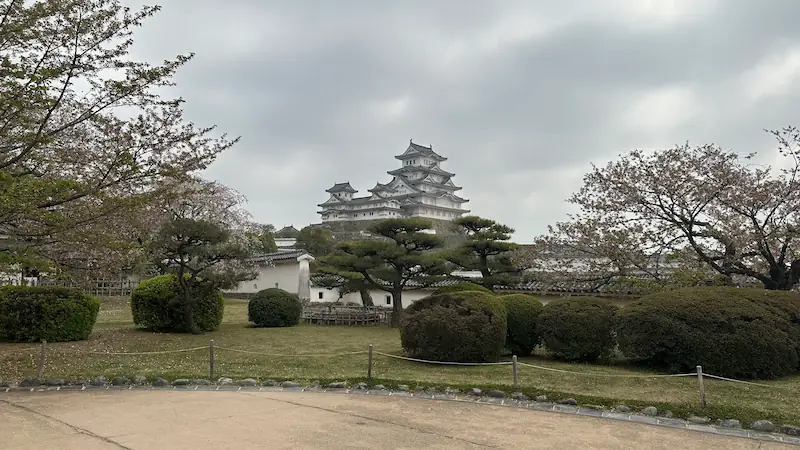
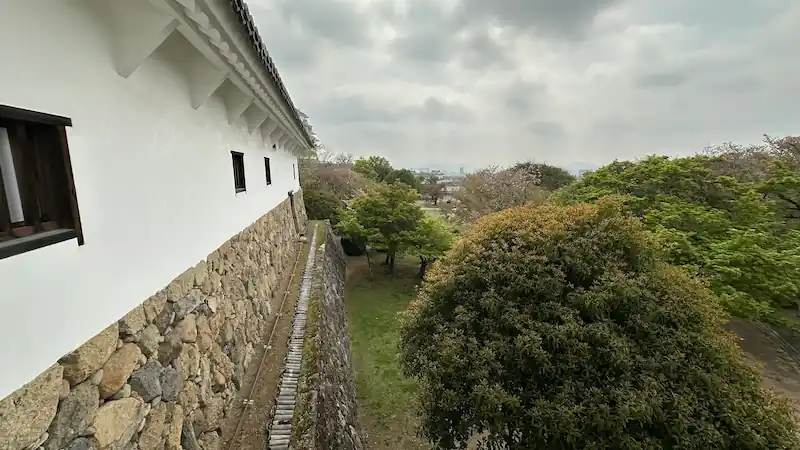
⭐ Recommended Rating
Historical Significance: ☆☆☆
Visual Appeal: ☆☆
Experiential Value: ☆☆
Nestled within the majestic Himeji Castle complex, the Nishi-no-Maru, or “West Bailey,” offers a unique glimpse into the private lives of Japan’s feudal elite. Constructed in 1618 by Honda Tadamasa, this area was designed to accommodate his daughter-in-law, Princess Sen, the granddaughter of Tokugawa Ieyasu. The Nishi-no-Maru served as her residence, reflecting the refined lifestyle and cultural sophistication of the early Edo period.
Architecturally, the Nishi-no-Maru is renowned for its Hyakken Roka, a 240-meter-long corridor connecting various turrets and chambers. This corridor, lined with tatami mats and shoji screens, exemplifies the harmonious blend of functionality and elegance characteristic of Japanese design. The area also features the Kesho Yagura, or “Dressing Tower,” where Princess Sen would prepare herself, underscoring the attention to detail in accommodating the needs of the castle’s inhabitants.
| Year Built | 1618 |
|---|---|
| Builder | Honda Tadamasa |
| Structure & Features | Residential quarters with a 240-meter-long corridor, multiple turrets, and the Kesho Yagura |
| Restoration History | Major restorations during Showa era (1956–1964) and Heisei era (2009–2015) |
| Current Status | Original structures still standing |
| Destruction or Damage | None |
| Cultural Designation | Designated as a National Important Cultural Property |
🗺 Address:68 Honmachi, Himeji, Hyogo Prefecture, Japan
🚶 Access
1minute walk (approx. 73m) from Kesho Yagura
⏳ Suggested Visit Duration
Quick Highlights: approx. 20 minutes
In-Depth Exploration: approx. 1 hour
📍 Highlights
- Hyakken Roka (Long Corridor): A 240-meter corridor connecting various parts of the Nishi-no-Maru, showcasing traditional Japanese architecture.
- Kesho Yagura (Dressing Tower): The private chamber where Princess Sen would prepare herself, reflecting the elegance of the era.
- Seasonal Beauty: The Nishi-no-Maru offers stunning views of cherry blossoms in spring and vibrant foliage in autumn, enhancing its serene ambiance.
📌 Trivia
- Historical Significance: The Nishi-no-Maru was specifically designed to accommodate Princess Sen, highlighting the importance of familial ties in feudal Japan.
- Architectural Harmony: The design of the Nishi-no-Maru seamlessly integrates residential comfort with defensive features, exemplifying the dual-purpose nature of Japanese castles.
- Preservation Efforts: The area has undergone significant restorations to maintain its historical integrity, allowing visitors to experience its original grandeur.
Main Keep (Tenshukaku)
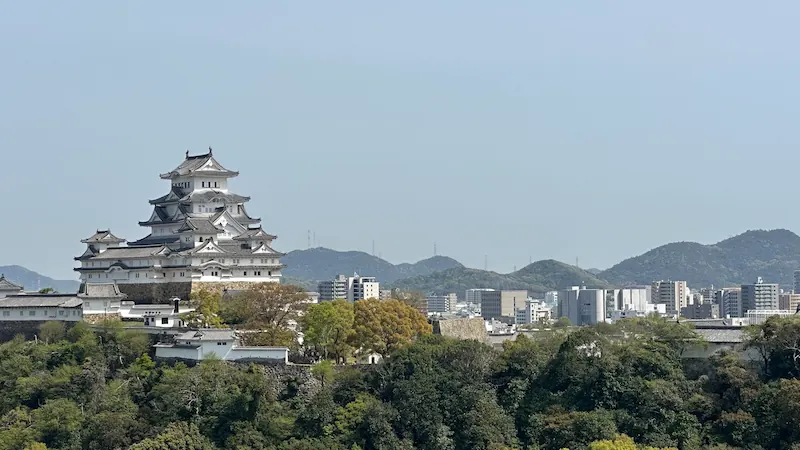
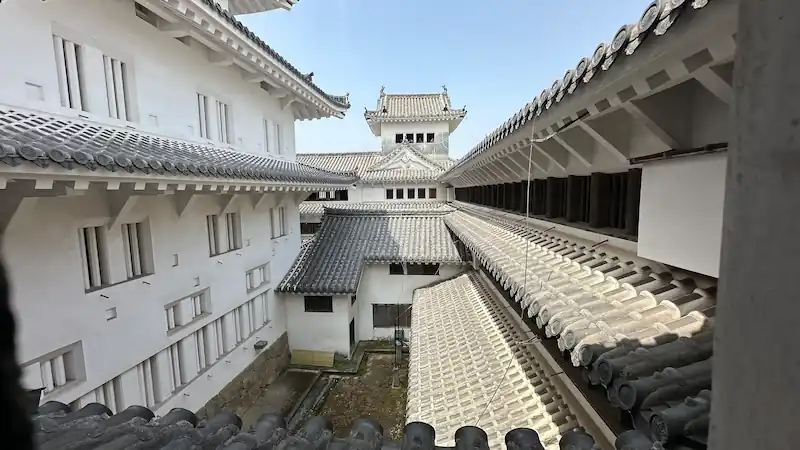
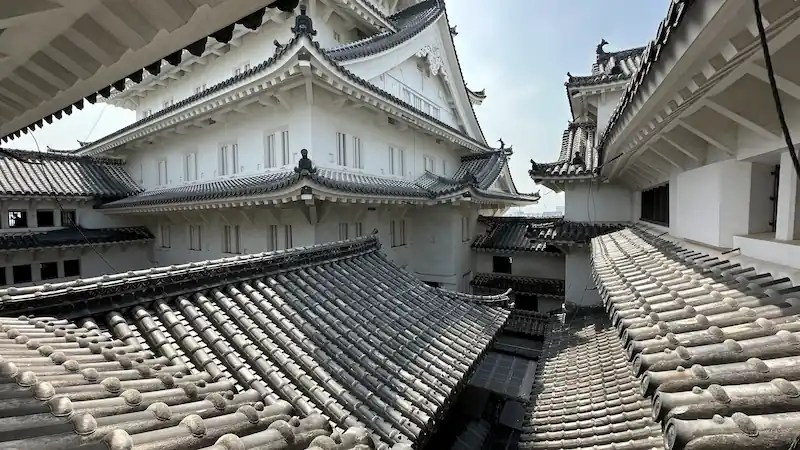
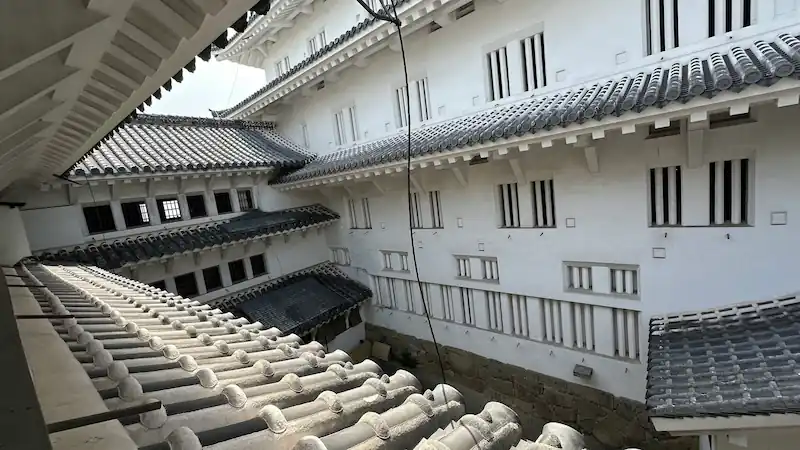
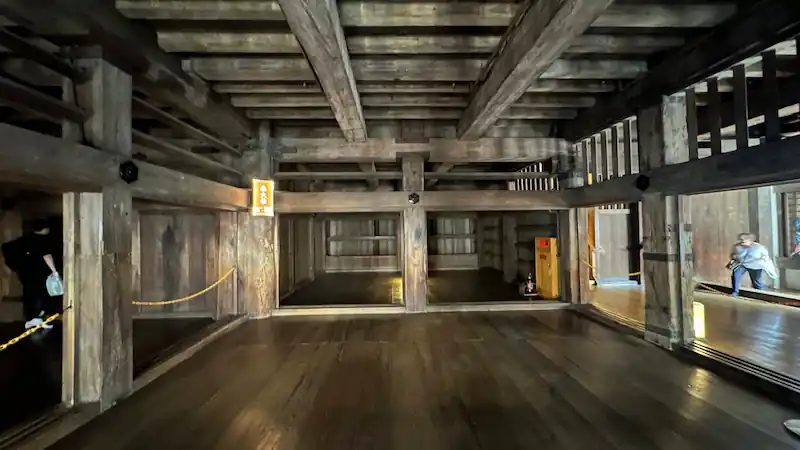
⭐ Recommended Rating
Historical Significance: ☆☆☆
Visual Appeal: ☆☆☆
Experiential Value: ☆☆☆
Rising majestically above the city of Himeji, the Main Keep (Tenshukaku) of Himeji Castle stands as a testament to Japan’s architectural ingenuity and feudal history. Constructed between 1601 and 1609 under the supervision of Ikeda Terumasa, a prominent daimyo and son-in-law of Tokugawa Ieyasu, the keep exemplifies the pinnacle of Japanese castle design during the early Edo period.
The Tenshukaku is a six-story structure with an additional basement level, giving it the appearance of a five-story building from the outside—a strategic design to confuse potential attackers. Its white plastered walls, earning it the nickname “White Heron Castle,” are not only aesthetically pleasing but also serve as a fire-resistant measure.
Wikipedia
Inside, the keep features a complex wooden framework supported by two massive central pillars, each approximately 24.5 meters tall, providing structural integrity and resilience against earthquakes. The interior includes various defensive mechanisms, such as loopholes for archers and stone-dropping chutes, reflecting the dual purpose of the keep as both a residence and a fortress.
| Year Built | 1601–1609 |
|---|---|
| Builder | Ikeda Terumasa |
| Structure & Features | Six stories with a basement, white plastered walls, complex wooden framework, defensive mechanisms |
| Restoration History | Major restorations during Showa era (1956–1964) and Heisei era (2009–2015) |
| Current Status | Original structure still standing |
| Destruction or Damage | Survived World War II bombings and the 1995 Great Hanshin earthquake with minimal damage |
| Cultural Designation | Designated as a National Treasure and UNESCO World Heritage Site |
🗺 Address:68 Honmachi, Himeji, Hyogo Prefecture, Japan
🚶 Access
6-minute walk (approx. 350m) from Nishi-no-Maru
⏳ Suggested Visit Duration
Quick Highlights: approx. 30 minutes
In-Depth Exploration: approx. 1.5 hours
📍 Highlights
- Architectural Mastery: The keep’s design showcases advanced defensive features and aesthetic elegance, representing the zenith of Japanese castle architecture.
- Historical Significance: As a symbol of feudal power, the Tenshukaku offers insights into the political and military strategies of the Edo period.
- Panoramic Views: The top floor provides sweeping vistas of Himeji city and the surrounding landscape, rewarding visitors for their ascent.
- Seasonal Beauty: The castle’s white walls contrast beautifully with cherry blossoms in spring and vibrant foliage in autumn, offering picturesque scenes year-round.
📌 Trivia
- Ingenious Design: The keep’s deceptive exterior, appearing as five stories while containing six, was intended to mislead attackers.
- Survival Through Turmoil: Remarkably, the Tenshukaku has withstood natural disasters and wartime bombings, preserving its original structure for over four centuries.
- Restoration Efforts: Extensive restorations in the 20th and 21st centuries have ensured the preservation of the keep’s historical and architectural integrity for future generations.
Bizenmaru (Bizen Bailey)
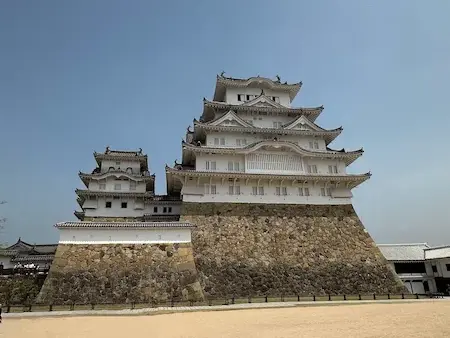
⭐ Recommended Rating
Historical Significance: ☆☆
Visual Appeal: ☆☆☆
Experiential Value: ☆☆
Bizenmaru, or Bizen Bailey, is a prominent open space located at the base of Himeji Castle’s main keep. Historically, this area housed the lord’s residence, which was unfortunately destroyed by fire in 1882. Today, Bizenmaru offers visitors an unobstructed view of the castle’s towering structure, making it a favored spot for photography and contemplation. The spaciousness of the bailey provides a unique vantage point to appreciate the architectural grandeur of the “White Heron Castle,” as Himeji Castle is affectionately known. The area is also accessible to visitors with mobility challenges, allowing a broader audience to experience the castle’s majesty.
| Year Built | Early 17th century |
|---|---|
| Builder | Ikeda Terumasa |
| Structure & Features | Open bailey that once housed the lord’s residence; now offers panoramic views of the main keep |
| Restoration History | Area maintained as an open space after the original structures were lost to fire |
| Current Status | Accessible open area within the castle grounds |
| Destruction or Damage | Original residence destroyed by fire in 1882 |
| Cultural Designation | Part of Himeji Castle, a UNESCO World Heritage Site |
🗺 Address:68 Honmachi, Himeji, Hyogo Prefecture, Japan
🚶 Access
1-minute walk (approx. 100m) from Nishi-no-Maru
⏳ Suggested Visit Duration
Quick Highlights: approx. 15 minutes
In-Depth Exploration: approx. 30 minutes
📍 Highlights
- Panoramic Views: Offers one of the best ground-level perspectives of Himeji Castle’s main keep.
- Historical Significance: Site of the former lord’s residence, providing context to the daily life within the castle grounds.
- Accessibility: One of the few areas within the castle complex that is accessible to visitors with mobility challenges.
📌 Trivia
- Photographer’s Delight: The open space and clear sightlines make it a popular spot for capturing the castle’s grandeur.
- Historical Layers: While the original structures are gone, the area still holds archaeological significance, with remnants of the past beneath its surface.
- Event Space: Occasionally used for cultural events and ceremonies, connecting the present to the castle’s rich history.
Mikuni Moat (Sangoku-bori)
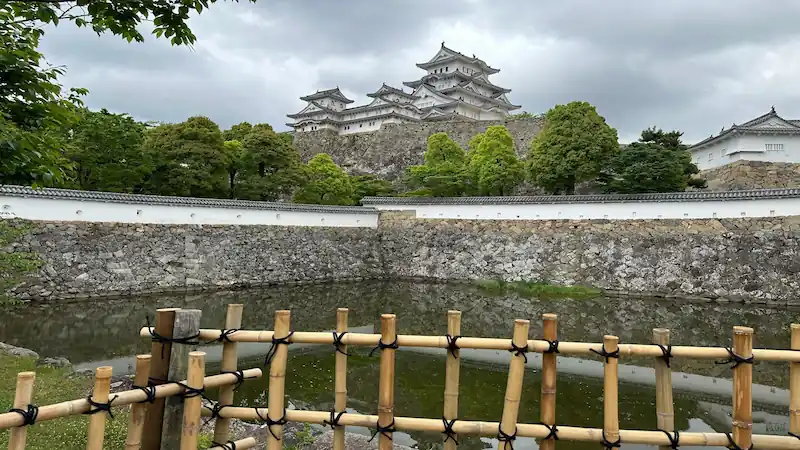
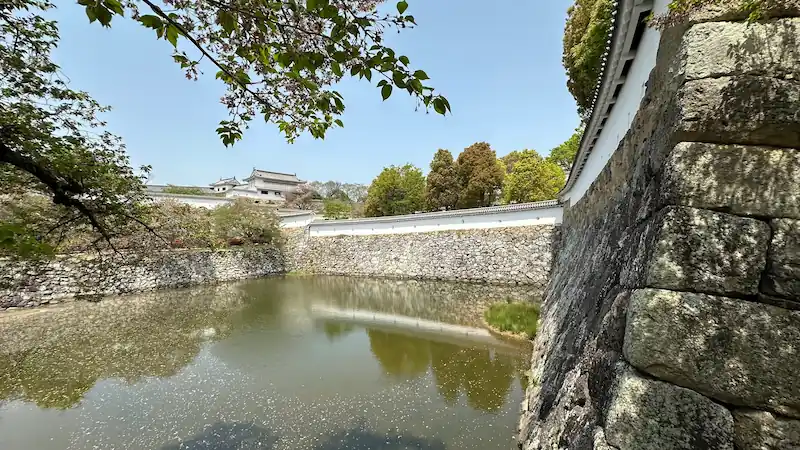
⭐ Recommended Rating
Historical Significance: ☆☆
Visual Appeal: ☆☆
Experiential Value: ☆
The Mikuni Moat, or Sangoku-bori, is a strategically designed square moat located just inside the Hishi Gate of Himeji Castle. Constructed during the early 17th century under the supervision of Ikeda Terumasa, the moat served both defensive and psychological purposes. Its name, “Mikuni,” meaning “Three Provinces,” reflects the labor force drawn from Harima, Bizen, and Awaji provinces for its construction. The moat’s placement cleverly divides the path into two routes: one leading to the “I-no-Mon” gate and the other to the “Ru-no-Mon” gate, creating confusion for potential invaders and allowing defenders to launch surprise attacks from hidden positions. Today, the Mikuni Moat remains a testament to the ingenious military architecture of the Edo period.
| Year Built | Early 17th century |
|---|---|
| Builder | Ikeda Terumasa |
| Structure & Features | Square moat designed to divide enemy forces and facilitate surprise attacks |
| Restoration History | Preserved as part of Himeji Castle’s historical landscape |
| Current Status | Original structure remains intact |
| Destruction or Damage | None |
| Cultural Designation | Part of Himeji Castle, a UNESCO World Heritage Site |
🗺 Address:68 Honmachi, Himeji, Hyogo Prefecture, Japan
🚶 Access
4-minute walk (approx. 300m) from Bizenmaru (Bizen Bailey)
⏳ Suggested Visit Duration
Quick Highlights: approx. 10 minutes
In-Depth Exploration: approx. 20 minutes
📍 Highlights
- Strategic Design: The moat’s placement creates a forked path, confusing invaders and allowing defenders to execute surprise attacks.
- Historical Significance: Named after the three provinces that contributed to its construction, reflecting the collaborative efforts of the Edo period.
- Photographic Opportunity: Offers a unique perspective of Himeji Castle’s defensive architecture.
📌 Trivia
- Deceptive Pathways: The moat’s design leads invaders into a trap, showcasing the castle’s advanced defensive planning.
- Architectural Ingenuity: Utilizes natural terrain to enhance defensive capabilities without extensive construction.
- Preservation: Remains one of the few original moats, offering insight into historical military strategies.
Kōko-en Garden
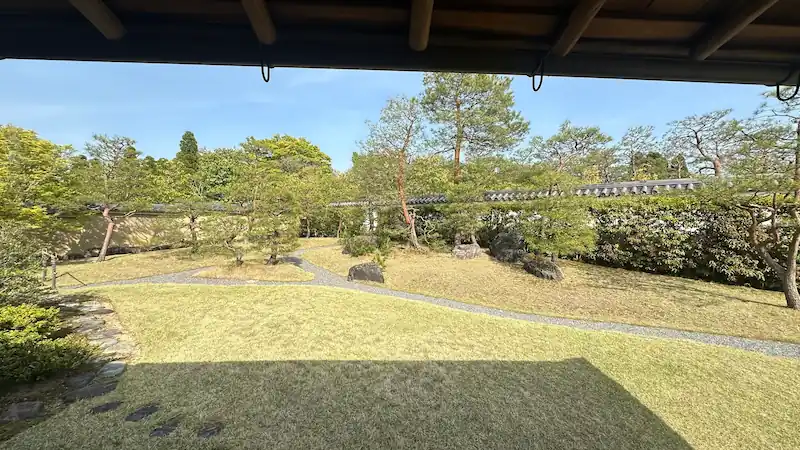
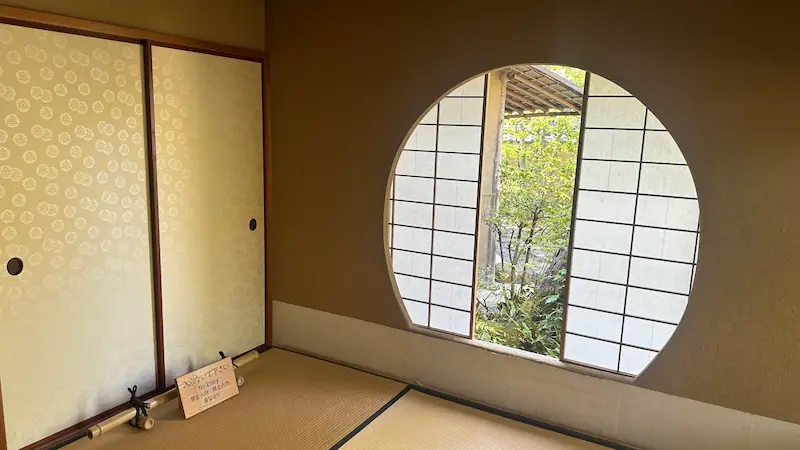
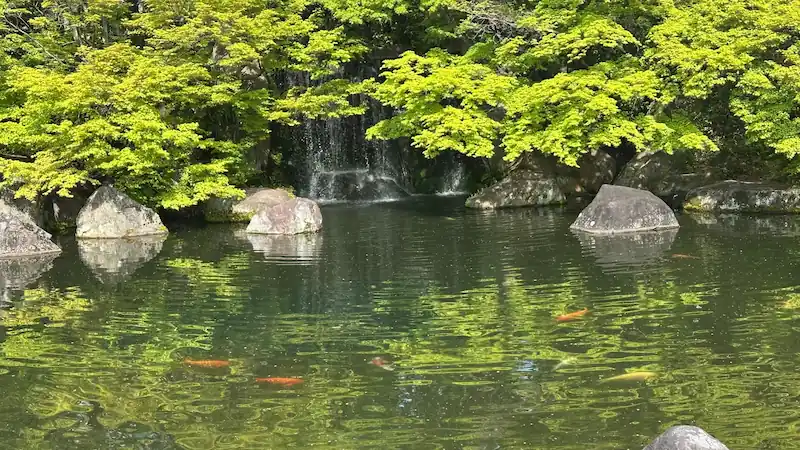
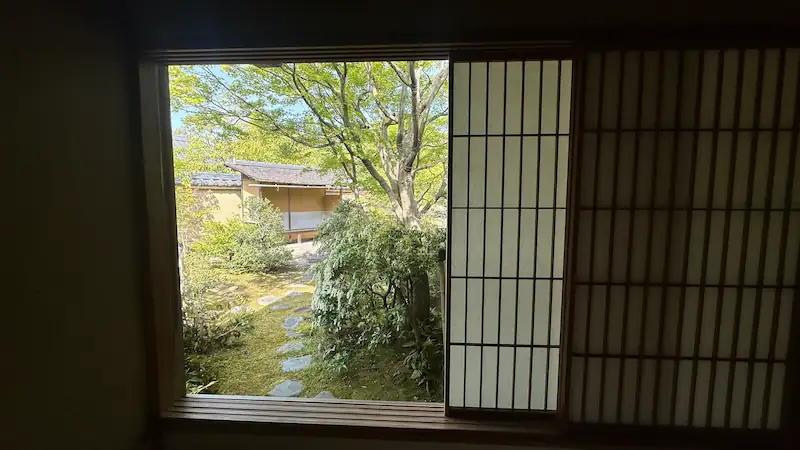
⭐ Recommended Rating
Historical Significance: ☆
Visual Appeal: ☆☆☆
Experiential Value: ☆☆☆
Just west of the grand Himeji Castle lies a peaceful, poetic world—Kōko-en Garden, a modern reconstruction that captures the spirit and elegance of Edo-period landscaping. Opened in 1992 to mark the 100th anniversary of Himeji’s incorporation as a city, the 3.5-hectare garden was carefully designed on the historic site of former samurai residences, including the Nishi-Oyashiki (Lord’s West Residence).
Kōko-en is not a single garden but a collection of nine distinct gardens, each enclosed and tailored to a specific theme: from the large pond garden that once mirrored the stature of feudal lords, to the simple, intimate tea garden where one can experience a traditional tea ceremony in the Souju-an teahouse. The site also integrates ruins and archaeological findings from the original Edo-period residences, ensuring that the experience remains both authentic and educational.
The garden’s seasonal transformations—cherry blossoms in spring, irises in summer, fiery maple leaves in autumn, and snow-dusted pines in winter—make it a place worth revisiting throughout the year. Whether strolling through moss-lined stone paths or pausing beside a koi-filled pond, Kōko-en offers a contemplative and immersive experience into Japan’s refined cultural heritage.
| Year Built | 1992 |
|---|---|
| Builder | Himeji City |
| Structure & Features | Nine individual Edo-style gardens, teahouse (Souju-an), wooden bridges, mud walls with kawara tiles |
| Restoration History | New construction on historical grounds; seasonal replanting and ongoing maintenance |
| Current Status | Fully preserved and open to the public |
| Destruction or Damage | None |
| Cultural Designation | Complementary site to Himeji Castle; not independently designated |
🗺 Address:68 Honmachi, Himeji, Hyogo Prefecture, Japan
🚶 Access
10-minute walk (approx. 750m) from Mikuni Moat (Sangoku-bori)
⏳ Suggested Visit Duration
Quick Highlights: approx. 30 minutes
In-Depth Exploration: approx. 1.5 hours
📍 Highlights
- Garden of the Lord’s Residence: The largest and most elaborate garden, featuring a central pond, seasonal flora, and elegant bridge crossings.
- Tea Ceremony Garden: Experience the ritual of Japanese tea at the authentic Souju-an teahouse nestled within a quiet moss garden.
- Seasonal Splendor: Each garden is planted to showcase Japan’s four seasons, making repeat visits rewarding throughout the year.
📌 Trivia
- Legacy of Learning: The name “Kōko-en” derives from Kōko-do, a Confucian school run by the Himeji domain during the Edo period.
- Film Location: Kōko-en’s authentic Edo atmosphere has been featured in numerous period dramas and films.
- Global Connection: In 2017, Kōko-en became a sister garden to the Japanese Friendship Garden in Phoenix, Arizona, enhancing international cultural exchange.





comment